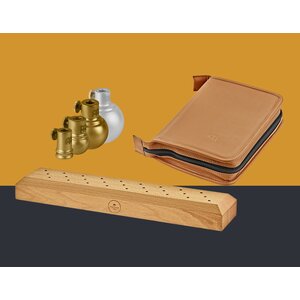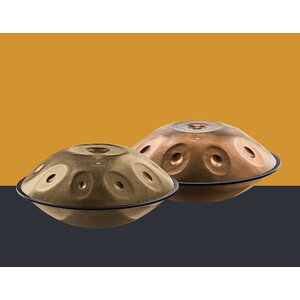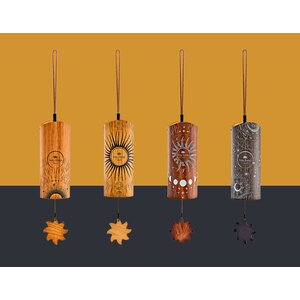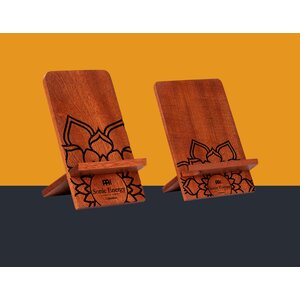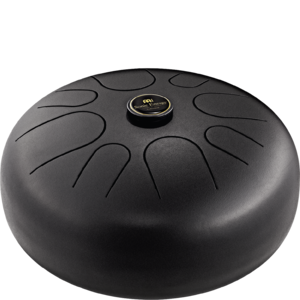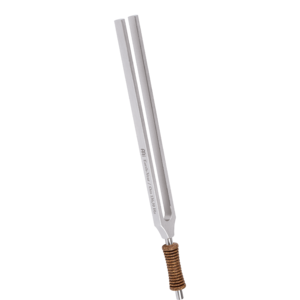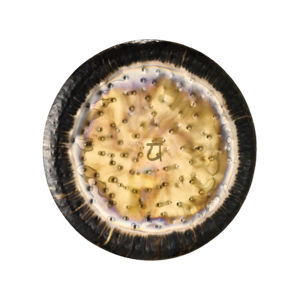All about KALIMBAS
The Kalimba originally comes from Africa. It is a centuries-old instrument, also known as "Mbira" and "Sansa" or simply "thumb piano". There are metal reeds placed on a wooden resonance box, which are plucked with the thumbs to produce a metallically fine sound.
At first glance, all Kalimbas have a similar design and look. However, there are some special features that make them distinctive instruments. Some vary regarding the number of keys, the body material, the body shape, and whether there’s a soundhole or not.
Meinl Sonic Energy offers many different Kalimbas: Starting by 8 key gift Kalimbas, over to 10 and 17 key solid, soundhole and wah-wah Kalimbas, up to a 21 key professional Kalimba. Find yours!
What you find on this page


Our Solid Kalimbas are stable instruments that are extra comfortable to hold and are made of great different woods.
Available with 8, 10, 17 and 21 keys.

Soundhole
The traditional soundhole of these Kalimbas creates warmer tones and a longer sustain. Besides, we incorporated wonderful designs for you around the soundhole.
Available with 10 and 17 keys.

Wah-wah
Wah-wah Kalimbas have a body-oriented soundhole so you can create a great wah-wah effect while playing by simply bouncing the Kalimba body on and off your belly which creatively moves the sound.
Available with 17 keys.

Pickup
Our pickup models feature an integrated pickup and high-quality quarter-inch output jack to amplify the instrument whenever you need to.
Available with 17 keys.
PRODUCE THE BEST SOUND
Hold the Kalimba by the long sides with the outer three fingers. If in doubt, the fingers can also reach around the lower edge of the frame as long as the tone is not affected. Hold the Kalimba loosely and without a strong grip, as this may damp or influence the sound. This holding position ensures that the instrument is in optimal balance. The thumbs are positioned loosely above the keys and can play each one with ease.
To produce a nice sound, the keys must be plucked with the thumb. To do this, simply place your thumbs from the front about 5mm before the end of the key and bend it with a small motion. The main movement should be controlled by the front thumb joint.
Here are the single steps to tune your Kalimba:
You will need
1. Your Kalimba
2. Tuning Hammer (included with all Sonic Energy Kalimbas)
3. Tuning App or Tuning Device
4. Silence
Listen for notes that are out of tune
Each Kalimba key contains the corresponding note on it.
Now, start your tuning app or device and play each key one after the other.*If your tuning pointer is not centered on the note while playing the key, moves to the left or right of the actual note, you need to make some adjustments with your tuning hammer and correct it until it stays perfectly in the center.
Tuning up a tone
Lightly hit the key from below with the hammer until the required tone is displayed.*
Tuning down a tone
Lightly hit the key from above with the hammer until the required tone is displayed.*
Finished!
Have fun playing your Kalimba!
*For perfectionists: Dampen both nearby tones with your fingers so that no unwanted resonances occur.
CARE FOR YOUR KALIMBA

Protect your Kalimba during transportation and put it in a bag or box. Please avoid overly humid environments. If the Kalimba gets damp and rusty, the key’s resonance function will be negatively affected.
Most of our Kalimbas already come with a case, a cotton bag, a microfiber cloth, and a tuning hammer. So you are well equipped!















